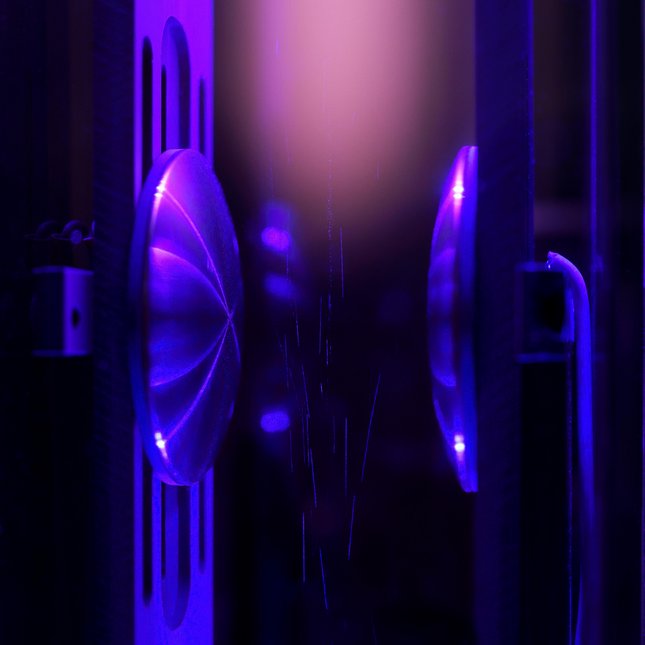
Under certain conditions, dust particles can be formed spontaneously in chemical reactive plasmas. These particles vary in size from a few nanometers up to tens of micrometers and become – under influence of plasma – permanently negatively charged due to which they can be confined in the plasma volume.
From application point of view, the presence of dust particles in plasma is of major importance. For instance, in solar cell production and in lithography tools, the presence of dust particles negatively affects crucial processes. Besides these negative effects, dust particles are increasingly frequently utilized in positive terms. For instance: nanometer-sized crystalline dust particles – so called quantum dots – can be utilized to enhance efficiency and stability of LED’s and solar cells and as probes for early cancer detection.
In the EPG group, formation, growth and confinement of dust particles in plasma is investigated from a fundamental point of view aiming at practical application of the gained knowledge. To that end we research the (mostly microwave and radiofrequently driven low pressure) plasma itself but, more importantly, also the interaction between plasma and dust particles. Applied diagnostics are: Microwave resonance spectroscopy (MCRS [link]) together with Laser-Induced Photodetachment (LIPD [link]), laser light scattering, photoluminescence and particle imaging.
Under certain conditions, dust particles can be formed spontaneously in chemical reactive plasmas. These particles vary in size from a few nanometers up to tens of micrometers and become – under influence of plasma – permanently negatively charged due to which they can be confined in the plasma volume.
From application point of view, the presence of dust particles in plasma is of major importance. For instance, in solar cell production and in lithography tools, the presence of dust particles negatively affects crucial processes. Besides these negative effects, dust particles are increasingly frequently utilized in positive terms. For instance: nanometer-sized crystalline dust particles – so called quantum dots – can be utilized to enhance efficiency and stability of LED’s and solar cells and as probes for early cancer detection.
In the EPG group, formation, growth and confinement of dust particles in plasma is investigated from a fundamental point of view aiming at practical application of the gained knowledge. To that end we research the (mostly microwave and radiofrequently driven low pressure) plasma itself but, more importantly, also the interaction between plasma and dust particles. Applied diagnostics are: Microwave resonance spectroscopy (MCRS [link]) together with Laser-Induced Photodetachment (LIPD [link]), laser light scattering, photoluminescence and particle imaging.
